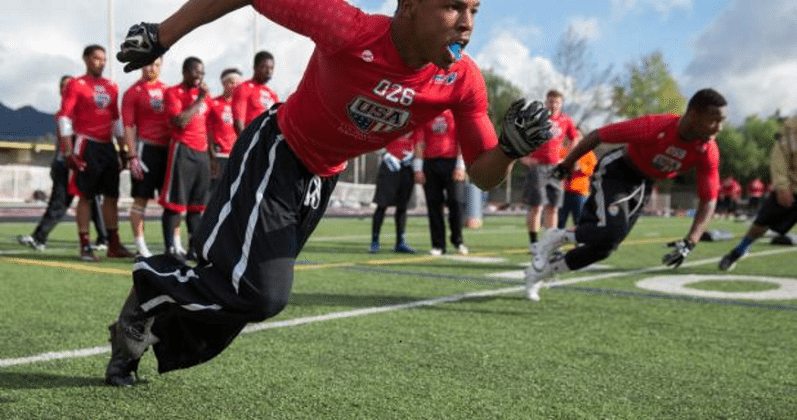Conventional theories on speed training have evolved through breakthrough research during the past 20 years.
What studies have shown is that while the end results are not wrong, the most common mistakes that coaches make is the order of priority given to young athletes.
After two decades of training athletes, I have found four general techniques that we can address to teach an athlete to run faster:
- Improved conditioning and strength: endurance and rep training
- Improved power output from the body: force application methods
- Improved movement speed: cycle the arms and legs faster through their range of motion
- Improved movement skill: speed, accuracy, efficiency, consistency, etc.
Link to original article in USA Football.
Movement skills required for running are by far the most overlooked and under practiced aspect of speed training, especially for non-elite and younger athletes.
Many athletes are already strong, powerful and in shape enough to learn to run faster. Most athletes already have good attitudes and give 100 percent effort.
What many athletes lack is the actual skills of how to run – to organize and synchronize the body in rhythm to run faster with less work.
It’s about how well the athlete can think while in motion.
See also: Work on speed training this offseason, not just strength.
See also: 3 Workout exercises to get top speeds faster.
Still, the vast majority of training methods for speed remain conditioning and power – the “no pain, no gain” approach.Complicating this is many youth coaches of non-running sports continue to use running as punishment. No wonder why most kids hate to run.
Complicating this is many youth coaches of non-running sports continue to use running as punishment. No wonder why most kids hate to run.
Speed training is about learning, then mastering efficient body movement mechanics – the form and function of what to move, where to move it and when to move it there.
What we don’t want is fatigued athletes who have a difficult time adjusting the body while in motion or focusing on the right movement patterns needed while in motion.
Think about when you are running dead tired with a stomach cramp. There is no space in your brain to concentrate on the execution of running movement skills.
For instance, a young athlete running to the point of exhaustion may solely be thinking about finishing the conditioning drill and getting it over with while he should be thinking about bringing his knees up three inches higher and three mph faster to that new target knee height, then cycling the leg downward at a speed of four mph so that running acceleration is a constant.
The rules of running faster are simply human body movement skills. It’s all we have. In order to complete any physical task, the body must move to and into certain positions at a particular time. Those skills come first.
Likewise, when you run but put your foot in the wrong spot, you won’t run faster, regardless of your strength, conditioning, dedication or work ethic. If you don’t know how or when to do a task, the task can’t be completed.
So, why do we spend the vast majority of time and energy on developing strength and conditioning? One answer: It’s easy to quantify and measure.
One answer: It’s easy to quantify and measure.
Most high school football teams have weight and strength training programs that award t-shirts to well deserving athletes when they reach certain levels – the 1,000 pound club, for example. Those achievements are great, and you better have some good strength to endure the game of football.
But I’ve never seen any award shirts for the efficient mover or efficient runner clubs. Have you?
How would you measure who has the best combination of speed, skill, timing, accuracy, composure, mental and physical endurance over a number of repetitions? Yet most competitive sports are based on how fast and accurately we do something.
If you can get to the spot before your opponent, you generally win that play. If you move your slow, superior strength or to the wrong spot, guess what? You will lose that play.
Strength and conditioning are very important, but for athletes who want to get faster, the skill of how to run should be the primary focus.
You can work hard later, after you have mastered the skills.
Be well. Be fast.

